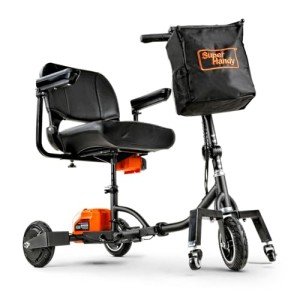The Reasons Mobility Aids Isn't As Easy As You Think
Understanding Mobility Aids: Enhancing Independence and Quality of Life
As society continues to age and individuals progressively look for methods to keep independence, the need for mobility aids has never ever been more essential. Mobility aids, which include a variety of devices developed to assist individuals with walking or walking around, play a crucial role in promoting mobility, enhancing safety, and improving total lifestyle. This blog post will explore the different types of mobility aids, their benefits, considerations for selection, and answer some often asked questions.
Types of Mobility Aids
Various mobility aids are offered, each designed to attend to specific requirements. folding mobility scooter reviews following table summarizes a few of the most typical kinds of mobility aids and their functions.
Kind Of Mobility Aid
Description
Best Suited For
Key Features
Walking canes
A handheld stick offering support and balance.
People who require minimal help.
Light-weight, portable, adjustable height.
Walkers
Four-legged frames supplying stability.
Those needing considerable support while walking.
Foldable, some with wheels, included security functions.
Rollators
Wheeled walkers with a seat for resting.
People needing mobility with the alternative to rest.
Brakes, baskets for personal items, adjustable height.
Wheelchairs
Chairs with wheels for people with limited mobility.
Those not able to walk or requiring substantial support.
Handbook or powered choices, adjustable seating.
Scooters
Motorized devices for bigger ranges.
People with restricted endurance however needing self-reliance.
Different sizes and styles, often easily transportable.
Crutches
Assistance devices placed under the arms or lower arms.
People recovering from lower limb injuries.
Adjustable, lightweight, needs upper body strength.
Stairlifts
Mechanical devices for moving between floors.
Users facing difficulties in multi-level homes.
Customizable for various staircases, automated.
Advantages of Mobility Aids
Mobility aids provide a range of advantages that can significantly improve the lives of people dealing with mobility obstacles. Some notable benefits consist of:
Increased Independence: Mobility aids empower individuals to move freely without counting on others for assistance, thereby enhancing their self-confidence and self-esteem.
Enhanced Safety: Using mobility aids can decrease the danger of falls and injuries, especially for older adults or those with balance problems.
Enhanced Quality of Life: By helping with mobility, individuals can take part in social activities, participate in occasions, and take pleasure in life more totally, contributing to much better psychological and mental health.
Rehab Support: After surgery or injury, mobility aids provide essential assistance and stability, assisting in healing and rehab procedures.
Accessibility: Many mobility aids are created to be utilized both indoors and outdoors, guaranteeing that people can browse various environments with ease.
Factors to Consider When Choosing Mobility Aids
Choosing the appropriate mobility help requires careful factor to consider of numerous elements, including:
Factor
Considerations
User's Needs
Examine the level of mobility needed; consider whether the user needs short-term or long-lasting support.
Physical Limitations
Assess the user's strength, balance, and coordination to determine the very best type of aid.
Setting
Think about the primary environments where the aid will be utilized, such as home, outdoors, or particular surfaces.
Weight and Portability
Guarantee that the selected device is manageable concerning portability and storage, specifically for outdoor usage.
Spending plan
Mobility aids been available in a variety of costs; think about insurance coverage and readily available financing choices.
Adjustability
Select aids that can be adjusted for height and comfort to accommodate growth or altering requirements.
Frequently Asked Questions About Mobility Aids
1. How do I know if I need a mobility help?
Numerous factors can indicate the requirement for a mobility aid, such as trouble strolling or balancing, fatigue while standing, or a recent surgery affecting mobility. Consulting with a healthcare specialist can offer assistance tailored to private needs.
2. What kinds of mobility aids are covered by insurance coverage?
Coverage differs between insurance companies, however a lot of offer choices for resilient medical devices, which usually includes wheelchairs, walkers, and some types of walking sticks. Contact your insurance coverage supplier for specific coverage info.
3. Can mobility aids be utilized outdoors?
Yes, many modern-day mobility aids are developed for outdoor usage. Rollators, scooters, and some walkers are geared up with features for stability and ease of usage on various surface.
4. How do I keep my mobility help?
Routine maintenance involves inspecting for any wear and tear, guaranteeing that parts such as wheels, brakes, and frames are functioning properly, and cleaning the equipment as required. Following the producer's standards is crucial for safety.
5. Is there a risk of ending up being depending on mobility aids?
While some users might become reliant on mobility aids, they are designed to promote self-reliance and mobility. Gradually utilizing a mobility aid can boost self-confidence and assistance keep physical strength and coordination.
Mobility aids are invaluable tools that empower individuals to conquer physical difficulties, promoting independence and boosting quality of life. By understanding the numerous kinds of mobility aids available, their benefits, and essential factors for factor to consider, families and caretakers can make informed choices that best satisfy the needs of their enjoyed ones. With the right support, those with mobility obstacles can lead satisfying and active lives, complimentary to check out the world around them.
